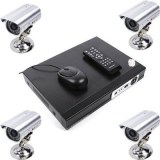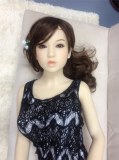VR is an optical technology that can improve image blurring caused by camera vibration, and can perform fast shooting when the shutter speed is reduced by three gears, allowing the use of a telephoto lens to take clear photos. When the photographer shoots a moving object, the system with best vr lenses, also known as virtual reality lenses, will automatically detect the movement of the camera. It is not only widely used in professional SLR lenses, but also often seen in consumer-grade digital cameras.
The shooting range of the TeSoo VR lens is F4-32, and the lens adopts a structure of 20 elements in 14 groups, including 3 ED lenses and HRI glasses. Within the zoom range of the full lens, and at the same time as the closest focusing distance, this lens also has the anti-shake capability of the third generation of VR. These five-level photographers can shoot hand-held in low light.
With VR technology, the photographer can compose and focus the a telephoto lens with a shallow depth of field correctly. TeSoo surely will provide you with the most satisfied VR lens and competitive VR lens price.
What Are VR Lenses?
Virtual reality lenses are specially designed for testing near-eye displays of head-mounted augmented reality and virtual reality devices. The VR lens adopts a specially developed unique optical design, which is suitable for measuring near-eye displays installed in head-mounted virtual reality devices. The lens design simulates the size, position and field of view of the human eye. Unlike other lens options where the aperture is located inside the lens, the aperture of the virtual reality lenses is located in front of the lens, which enables the entrance pupil of the imaging system to be positioned in the same position as the human eye is viewing in the NED headset.
How Do VR Lenses Work
1
Since the aperture is located in front of the lens, the connected imaging system can capture the full field of view (FOV) of the display (up to 120 degree in the horizontal direction, covering a field of view similar to the field of view of human eyes) without the lens hardware obstruction.
2
The 3.6 mm aperture size also matches the size of the entrance pupil of the human eye, which enables the measurement system to measure the display under the same conditions as when viewed by a human observer. This can ensure that all aspects of the display that the user can see are fully measured to ensure that the user gets the expected experience.
Is VR Lens Bad For Your Eyes?
It Depends On Many Factors Of Your VR Lens
VR originally emphasized an immersive experience, a virtual world that is completely isolated from the real world, so now this completely closed form is the best choice at present, which means that it is relatively unrealistic to change the structure of virtual reality lenses. No matter what kind of VR device it is based on, there are only two lenses between the screen and the eyes, and the distance is only a few centimeters. Therefore, the blue light produced by the screen is inevitably taken into the eyes. The degree of damage to the eyes of blue light depends on many factors, including lens technology, lens size, lens brightness, distance and duration from the user's face
If you are looking for a reliable lens company, don't hesitate to contact us!
Location : Tianhui Building,Donghuanyi Road,Longhua New District,Shenzhen,China, 518000 Longhua,
Contact : ptical tesooo, 0755 28006150








